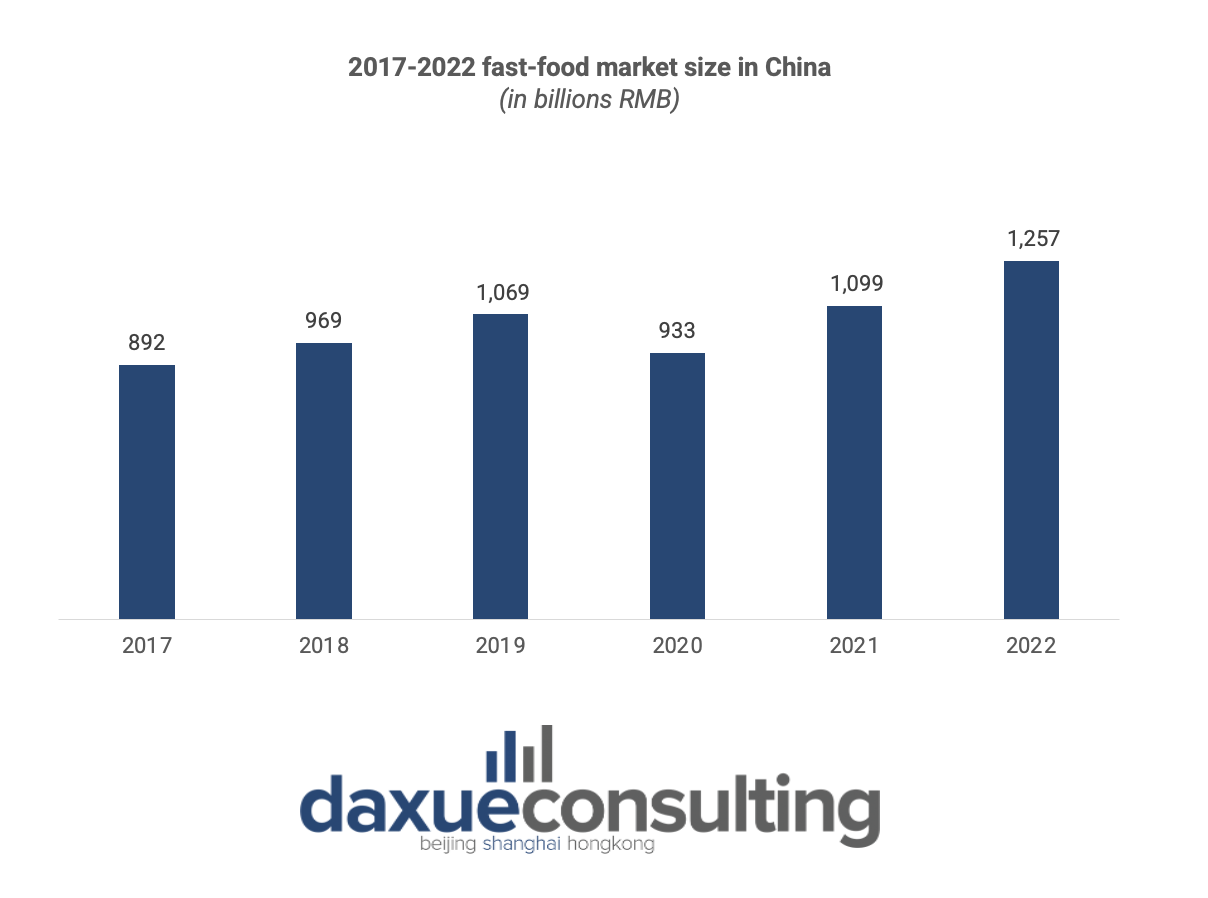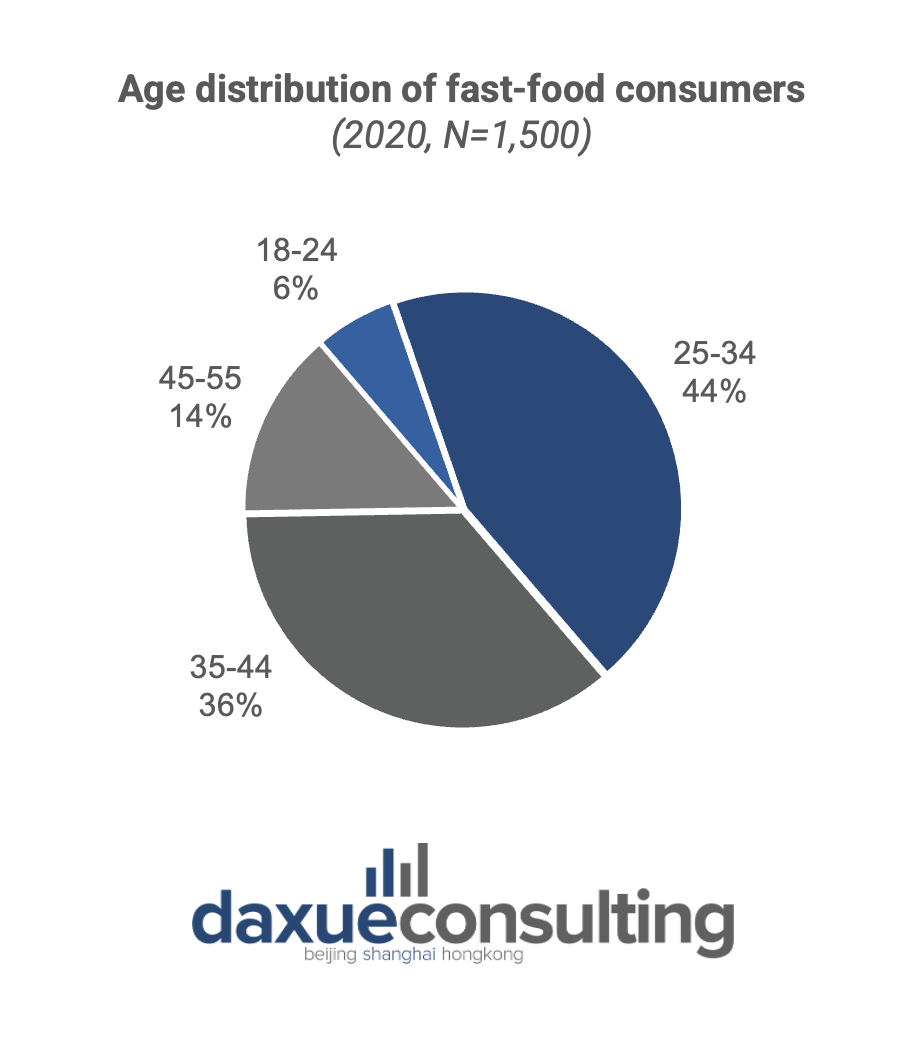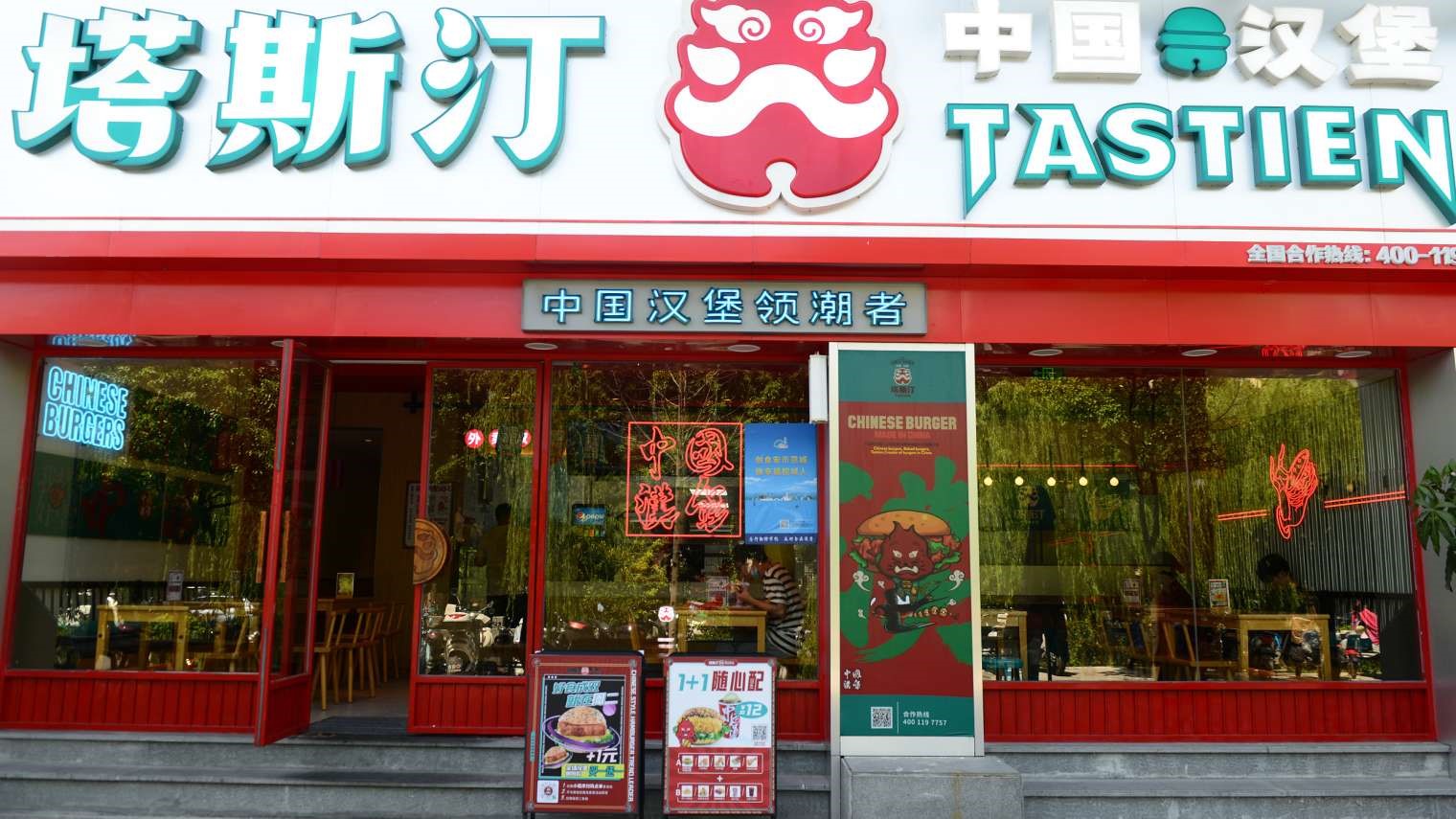In recent years, the fast-food market in China has witnessed a steady growth trajectory, buoyed by the increasing incomes of Chinese residents. Although the revenue of the fast-food industry dropped by 10.08% in 2020 due to the pandemic, it has since rebounded due to proactive government measures, such as subsidies for food enterprises, and evolving consumer tastes. In 2021, China’s fast-food industry generated over 1 trillion RMB, with a year-on-year growth of 17.78%, and it is expected to reach 1.8 trillion RMB in 2025.

Young adults are the key consumers of the fast-food in China
According to Euromonitor International, young adults (25-34) constituted the largest segment, accounting for 44% of fast-food consumers in China. his trend can be attributed to the fast-paced lifestyle prevalent in China’s cities, where office workers have limited time for lunch. Additionally, many companies lack their own canteens, leading employees to rely on outside options for their meals. To save time, they often opt for convenient fast-food choices.

Multinational players dominate the fast-food industry in China
According to a data report from Zhiyanzhan Industrial Research Institute, McDonald’s, KFC, Burger King and Wallace accounted for more than 90% of the market in 2022. Three of the top five fast-food brands in China are multinational companies: Yum! Restaurants, McDonald’s Corp, and Restaurants Brand International (which includes Burger King and Tim Hortons). These fast-food giants have achieved remarkable success in the Chinese market thanks to their early entry into the market, established brand awareness as well as consistent product and service quality. McDonald’s and KFC are by far the two most popular fast-food brands in China, boasting over 4,905 and 8,675 restaurants, respectively, as of 2022 Q3.
McDonald’s and KFC leverage content marketing to win over Chinese consumers
Content marketing on social media plays a pivotal role in the marketing strategy of fast-food brands like McDonald’s and KFC. One notable example is KFC’s initiative of offering price reductions on its products every Thursday since August 2018. However, it wasn’t until 2021 that this ongoing promotion gained significant popularity, thanks to the tagline “Crazy Thursday send me 50 yuan” (疯狂星期四V我50元), which started generating buzz online and even became a viral meme. The rise in popularity started when the company invited celebrities to endorse the event and people to make memes on the internet. As a result, every Thursday, the internet becomes inundated with memes and posts related to the Crazy Thursday promotion. This phenomenon has given rise to the emergence of Crazy Thursday Literature (疯四文学), a term coined to describe jokes, short stories, and modified song lyrics that humorously reference this activity. In December 2021, KFC even organized the Crazy Thursday Literature Festival to award the funniest and most creative content creators. Capitalizing on this trend, KFC also launched the V我50元 gift cards, available for purchase on their WeChat mini program.

Chinese fast-food brands are rising due to Guochao consumption
While American brands currently dominate the fast-food market in China, domestic companies have been intensifying the competition. Furthermore, with the emergence of Generation Z, an increasing number of Chinese consumers are embracing Guochao consumption, adding further momentum to the domestic fast-food industry. For instance, Tastien, a Chinese fast-food brand that specializes in Chinese-style burgers, has experienced rapid expansion within just a few years, boasting nearly 3,500 stores as of March 8, 2023. Their “Chinese hamburger” stands out by combining hand-made and baked flatbread with delectable Chinese-style fillings like stir-fried spicy chicken and Beijing roast duck. These unique characteristics have garnered Tastien a significant following on popular social media platforms such as Xiaohongshu and Douyin, further contributing to the brand’s popularity.
Furthermore, Tastien has embraced a “Guochao style” in its brand positioning and store design. This is evident in its brand logo, which features a Chinese lion, as well as its store decorations and product packaging that incorporate traditional vibrant red tones. Even its slogan, “Chinese stomachs love Chinese burgers (就是中国胃,就爱中国堡),” reflects the brand’s commitment to catering to Chinese tastes and preferences.

Future prospect: a shift toward healthier eating
The pandemic has shifted people’s perceptions of health: in 2021, health and family safety became the top concerns for half of Chinese consumers. As a result, consumers are now paying greater attention to the quality of products, including factors such as their safety, natural ingredients, and nutritional intakes. This shift in consumer preferences has prompted many fast-food companies to incorporate healthier or dietetic ingredients in their products. For example, in April 2020, KFC China launched its first plant-based chicken nuggets for a test trial in three of its major cities: Shanghai, Guangzhou, and Shenzhen. Chinese consumers received the launch with enthusiasm – the presale coupons sold out within one hour of its launch. Later in June, KFC partnered with Beyond Meat to introduce the Beyond Meat burgers. The addition of vegan options to KFC’s menu illustrated KFC’s commitment to catering to health-conscious consumers and further solidified its image as a sustainable brand in China.
What are the newest developments in China’s fast-food market?
- The fast-food market in China has been growing healthily and maintaining rapid growth in recent years, driven by factors such as the continuous improvement of residents’ income and expenditure, government efforts, and evolving consumer preferences.
- McDonald, KFC, Burger King and Wallace are leading in the fast-food industry in China, accounting for more than 90% of the market share. McDonald and KFC are the most prominent and successful of these brands, thanks to their leverage of content marketing.
- Chinese young adults are the key consumers of the fast-food in China. However, with the rise of Generation Z groups, more Chinese consumers begin to pursue Guochao consumption, leading to a bloom of Chinese fast-food brands including Tastien.
- The pandemic has shifted Chinese people’s perceptions of health and this shift in consumer preferences has prompted many fast-food companies to incorporate healthier or dietetic ingredients in their products.
Author: Lyu Ai
Learn more about young Chinese consumer preferences






